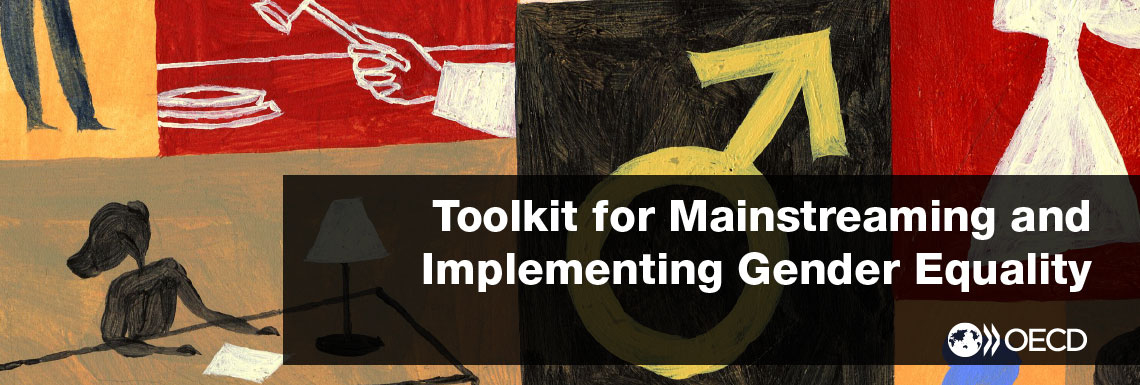Government has an institution for gender equality with appropriate level of responsibility and authority
SELF-ASSESSMENT QUESTIONS
- Is there a permanent government institution/body at the national level which is responsible for promoting gender equality and supporting government-wide gender equality policy?
- Is the level of responsibility and position of the gender equality institution within the governmental structure adequate for promoting gender equality and supporting government-wide gender equality policy?
- Has the gender equality institution the sufficient mandate and resources for promoting gender equality and supporting a government-wide gender equality policy?
WHY IS IT IMPORTANT?
Central gender equality institutions, which take many forms, help ensure that the public sector fosters gender equality and mainstreaming across government policy and within society as a whole. They can be a separate ministry, paired with other portfolios within a single ministry, or located within the office of the head of government or state. Sometimes. gender equality councils or commissions function as autonomous bodies with an independent status or in consultation with the government.
Whatever their form, such institutions should not be given the exclusive responsibility within the government for promoting gender equality. Rather, they should provide advice and guidance to government and line ministries and monitor improvements in relation to gender equality. They need sufficient resources, visibility and authority to co-ordinate a government-wide initiative. Finally, they also need access to gender-disaggregated statistics and data on the gender equality outcomes of government policies and initiatives (for more on gender-disaggregated statistics and data, see Recommendation II.2).
ACTIONS TO CONSIDER
- Locate central gender equality institution within the highest possible level of government (e.g. Cabinet level) to ensure it has visibility and authority to coordinate and monitor government-wide gender equality strategic plan;
- Establish clear mandate, resources and capacity within central gender equality institution to deliver as expected;
- Assess whether available resources (e.g., time, staff, budget, skill sets, equipment, training, etc.) are adequate to effectively execute its mandate, strategic goals and work plans;
- Allocate and systematically review resources to meet the strategic goals and work plans of gender equality institution;
- Ensure that central gender equality institutions are staffed with expertise in policy, analysis, advocacy, communication and monitoring to implement their mandates.
PITFALLS TO AVOID
- Central gender institutions do not have the leverage necessary to co-ordinate a whole-of-government approach across policy fields regardless of their institutional designs;
- Central gender equality institutions have limited capacities, inadequate or inexistent budgets and/or unclear responsibilities;
- Central gender equality institutions lack expertise in policy development, analysis, advocacy, communication and/or monitoring to fully implement their mandates;
- Central gender equality institutions are unable to effectively ensure gender mainstreaming at the sub-national level.
COUNTRY EXAMPLES
Chile
In Chile, the National Women’s Agency (SERNAM) created in 1991 was the supervisory agency that ensures that the public sector incorporates a gender focus when planning, budgeting, implementing and monitoring public policies. SERNAM has worked closely with the Presidency in evaluating the work of the ministries and presenting their achievements. In 2015, SERNAM was announced to be reconstituted as a full-fledged Ministry. The same year, the Chilean Government enacted the law that created the Ministry for Women and Gender Equity to strengthen governance of gender equality with a more robust institution and stronger regional presence.
Sources: Ministry for Women and Gender Equity of Chile
Sweden
The Swedish government runs a programme for Gender Mainstreaming in government authorities with an overall purpose to ensure that the activities and services produced by participating governmental agencies contribute to the government’s gender equality policy objectives. The programme currently encompasses sixty public sector authorities in a wide range of policy areas. The Minister for Children, the Elderly, and Gender Equality, placed at the Ministry for Health and Social Affairs, is responsible for coordinating, developing and following-up the work on gender mainstreaming. In 2015, the Gender Equality Inquiry aimed to assess the effective governance of Swedish gender equality policy. The Inquiry concluded that "more coherent management of gender equality policy is required to provide the conditions for monitoring and analysing gender equality progress in society". To overcome this challenge, the Inquiry proposed that "(…) a government agency for gender equality be set up with responsibilities to analyse gender equality progress in society and following up efforts to achieve the gender equality policy objectives; coordinating gender equality policy tasks; supporting the gender mainstreaming efforts of government agencies, municipalities, county councils and regions, and – otherwise assisting the Government in other matters concerning gender equality policy".
Sources: Government Offices of Sweden (2016)

